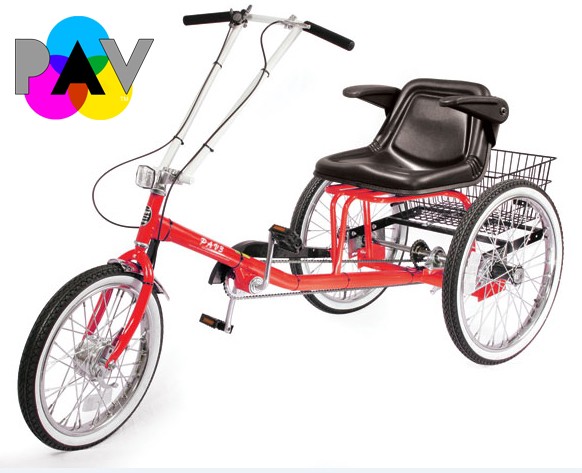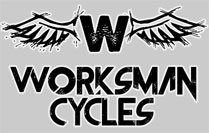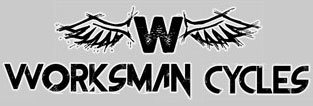Mastering Turns on an Adult Tricycle: Tips to Avoid Tipping Over
 Riding an adult tricycle or a three-wheel bike may seem like a natural extension of riding a two-wheel bicycle, but they operate quite differently. The additional wheel provides more stability and a unique level of comfort that can't be matched by two-wheel bikes. This added balance opens new possibilities for riders of all experience levels.
Riding an adult tricycle or a three-wheel bike may seem like a natural extension of riding a two-wheel bicycle, but they operate quite differently. The additional wheel provides more stability and a unique level of comfort that can't be matched by two-wheel bikes. This added balance opens new possibilities for riders of all experience levels.
However, it also changes how riders approach specific movements—especially turns. While a three-wheeled design makes it easier to balance, turning can be tricky if not done correctly. To ensure a safe and comfortable ride, it's essential to understand how to execute turns and avoid tipping over.
The Difference Between Two and Three-Wheels
Unlike a traditional bicycle, where riders lean into turns, a tricycle remains upright, and all three wheels maintain stability. This lack of leaning during turns can initially throw off new riders who are used to the agile steering of a two-wheeler. It's important to understand that turning a tricycle requires a different technique, particularly around corners, where improper handling can result in tipping.
Learning to ride a three-wheel bike isn't just about getting the hang of balance; it's about rethinking how you take turns, distribute your weight, and manage your speed.
Critical Tips for Turning on a Tricycle
- Wider Turns for Safety: When approaching a turn, it's important to remember that a tricycle is wider at the back than a two-wheel bike. One of the most common mistakes is not accounting for the rear wheels, which can hit curbs or obstacles if the turn is too tight. Riders should take wider turns, allowing the front wheel to fully clear the corner before letting the rear wheels follow. This prevents clipping the curb and reduces the risk of tipping.
- Watch Your Speed: Speed is a critical factor when turning on a tricycle. Unlike bicycles, tricycles don't lean into the turn, meaning that faster speeds can cause the inside rear wheel to lift off the ground, increasing the chance of tipping. It's essential to slow down when entering a turn, then gently accelerate once you're safely through the corner.
- Control Your Weight Distribution: Proper weight distribution prevents tipping. When taking a turn, keep your body centered and avoid leaning too far to one side, as you might do on a bicycle. Shifting your weight to the outside of the turn can help stabilize the bike and keep all three wheels on the ground. However, be cautious not to overcompensate, which can cause the opposite side to lift.
- Use Gradual Turns to Build Confidence: For new riders, practicing with gradual turns is not just a suggestion; it's a crucial step in building confidence. Start on a flat, spacious surface with plenty of room to maneuver, and practice taking wide, sweeping turns at lower speeds. As you become more comfortable, you can gradually increase the sharpness of your turns while maintaining control and stability. Remember, it's a journey, and patience is key.
- Know the Limits of Your Trike: Each tricycle model has its handling characteristics, and electric trikes might behave differently from manual ones. Pay attention to how your specific tricycle responds to turns, and be mindful of its design. For example, some trikes may only drive one rear wheel, which can impact how the bike handles sharp turns. Understanding your trike's mechanics will help you adjust your riding style accordingly.
Pre-Turn Preparation
Before setting off on your tricycle, a few essential checks will help ensure smoother turns and reduce the risk of tipping.
- Check the Air Pressure
- Why it matters: Proper tire inflation provides the traction needed for stable turning. Low pressure can cause your trike to lose grip during sharp turns, leading to instability.
- Tip: Always check tire pressure before riding to ensure it's at the recommended level for optimal control.
- Inspect Your Brakes
- Why it matters: Effective brakes allow you to control your speed when approaching a turn. Entering a turn too quickly without proper braking increases the risk of tipping over.
- Tip: Test front and rear brakes before each ride, ensuring they engage smoothly and slow you down before turns.
- Take Wider Turns
- Why it matters: Tricycles have a broader rear base, so tight turns can cause the back wheels to clip obstacles, leading to tipping.
- Tip: Steer wider than you would on a two-wheeled bike to give the rear wheels enough room to follow through safely.
Ride Safely, Enjoy the Journey
Riding an adult tricycle offers a unique blend of stability, comfort, and fun that two-wheel bikes can't match. The added balance of a third wheel opens up new possibilities for riders of all experience levels. However, mastering the art of turning is essential for ensuring a smooth and safe ride. So, ride safely, enjoy the journey, and embrace the unique joy of riding an adult tricycle.







